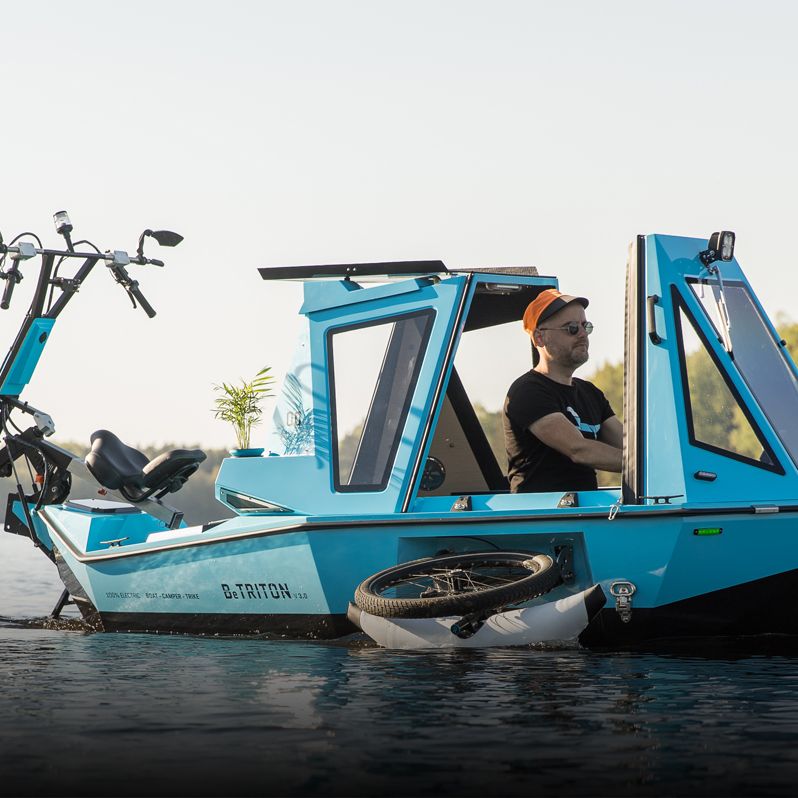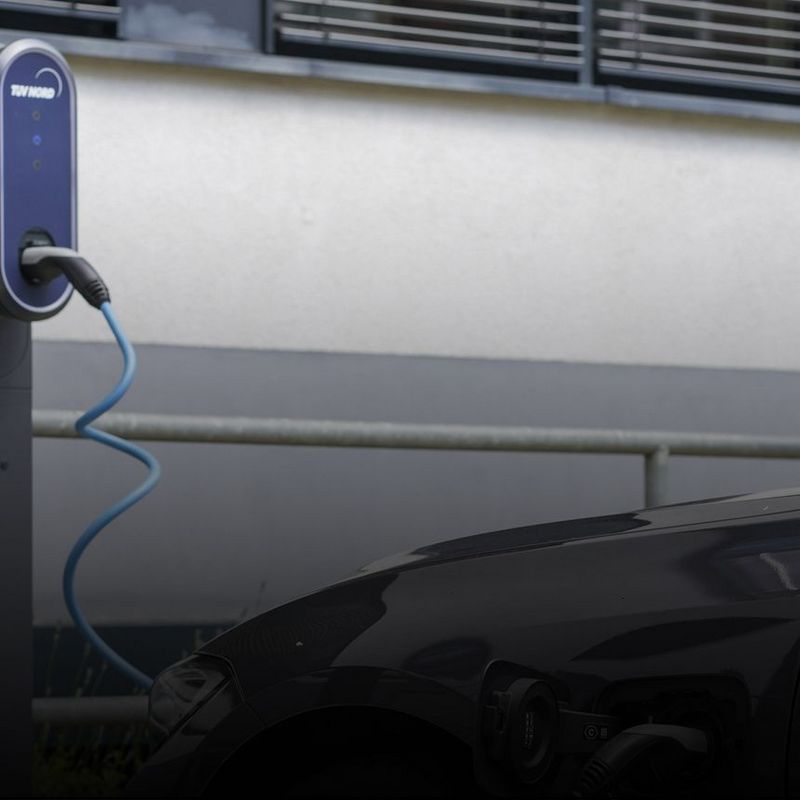12. Oktober 2023
Thanks to good insulation, powerful heating and heated drinking and wastewater tanks, heading out in the winter is not usually a problem for modern mobile homes. But many camping enthusiasts prefer to store their campers over the winter instead. Read on for our helpful hints on looking after your mobile home during the winter, so that you will be all ready to head out again in the spring for the new holiday season.
Find a roof for your camper
You could of course just park your mobile home on the road for the winter. But it’s much better to have a secure shelter for your vehicle. Renting a space indoors or at least parking it on your own car port will protect your mobile home better from ice and cold weather.
Keeping your handbrake on during the winter can cause it to rust solid. So, you should always leave the handbrake off, put your camper into first gear and also use wedges to stop it from rolling away.
A last autumn clean for your mobile home
Remove any food and leave the fridge door open.
Open all the lockers, doors and cupboards – this will ensure good ventilation.
If the mobile home is being kept in a clean and dry hangar, open the windows slightly for ventilation purposes. This will take the strain off the rubber seals during the winter.
Put a dehumidifier in the middle of the vehicle. As the name suggests, this device will draw damp out of the air, preventing the build up of mould and stale air.
Don’t turn off the taps but leave them open at the mid-point between hot and cold. This will allow water to drain out of the hoses, preventing the build-up of germs.
Don’t use aggressive toilet cleaner! The same applies to any plastic surfaces in the “wet room”. Occasionally apply silicone spray to the slider – this will ensure that it doesn’t get stuck.
© Adobe StockBefore the winter break, it is advisable to have the caravan thoroughly cleaned in a car wash.
Pre-hibernation technical checks
All drinking water must be allowed to drain completely before the winter break. Otherwise, the frost protection valve will open at temperatures above +3 degrees, causing any residual water to run out onto the floor of the hangar or car port.
Manually open the frost protection valve, also known as the “frost guard”, first to drain the heating boiler in a controlled manner. The valve is located close to the heating.
Switch off the main switch or fuse for the drinking water pump.
Flush out the wastewater tank and leave it open once it has drained completely.
Close the gas bottle and then completely remove the hose.
Increase the tyre pressure by 0.5 bar to prevent flat spots caused by extended immobility.
Before hibernation: fill the fuel tank! In this way, less condensation will form in the tank: condensation mixes with diesel and can cause metal tanks to rust.
Check the windscreen washer and coolant systems: top up if required and don’t forget to add antifreeze!
Keep an eye on other fluids in the engine and top them up if need be. Engine oil (always observe the specifications and manufacturer’s instructions), brake fluid (if the level has gone down sharply, take it to a garage) and power steering oil.
Fully charge all batteries: the starter battery and leisure battery.
Check the date on the test disc (in Germany). Just in case the vehicle is due for its periodic inspection during the winter months.
© iStockDanger of frost: Fresh water and waste water must be completely drained before the winter break.
Clean from the roof to the underbody
In Germany, you are not permitted to wash vehicles on your own property! Nor do you need to: many carwashes are big enough to accommodate mobile homes. They also often have a platform or scaffold that you can use to reach the roof and upper parts of the mobile home to wash them easily.
A high-pressure washer is a good option for a basic clean. Having said that, don’t aim the jet directly at the fridge outlet grille or the heater flue.
Acrylic windows scratch easily. Which is why you should only ever clean them with a soft sponge and low-pressure water.
There are special cleaners for acrylic windows and other moulded GRP (glass reinforced plastic) parts, such as the rear apron, which will also easily remove insect squash and dark streaks left by rain.
Many mobile homes are covered with adhesive film. So, you should avoid aggressive cleaning solutions at all costs!
Really important: If you have driven on gritted roads before storing your mobile home for the winter, you will need to wash the underbody! Otherwise, the salt used for gritting will attack the shell, the chassis and the brakes.
There are special care products you can get to treat the rubber seals around doors, windows and dust flaps to maintain their elasticity.
If you have enough time, you should polish the mobile home and then seal the surface with liquid wax. This may be time-consuming, but it will protect the structure much more effectively against dirt and make it easier to wash the mobile home next time around, as the dirt will find fewer places to cling to. When you are choosing which wax to use, make sure that it is suitable for the surface of your mobile home – in other words, for films and plastic.
Are the screw connection and the rubber hose of the gas system intact? Regular checks are worthwhile.
Visit regularly
Especially when it is very cold, it’s important to keep your batteries charged up at all times. You will otherwise run the risk of deep discharge, which can damage a battery. This is why you should charge your batteries every four to eight weeks.
The leisure battery can simply be plugged into the mains to charge. If there is no power point in your camper’s winter quarters, you should plan a regular trip to somewhere that has one. You can then use a charger to charge up your starter battery.
From time to time you should move your mobile home a little. This will protect your tyres from flat spots due to long periods of immobility.
Is everything still leak-tight?
OK, so your gas system will in any case be checked every two years by TÜV NORD experts, for instance, when you take your vehicle for its periodic inspection. But you should still regularly check the gas pipe connectors and rubber hose yourself. For this, you can either use a special leak detection spray or simply mix water and washing-up liquid and apply the mixture to the connectors. If small bubbles form, you have a leak somewhere! Go to the gas stove to check that the flame failure device is working properly. The test is simple: Blow out the flame. The gas supply should switch off after a few seconds. After heavy and persistent rain, check the roof lights and wall units for leaks.






